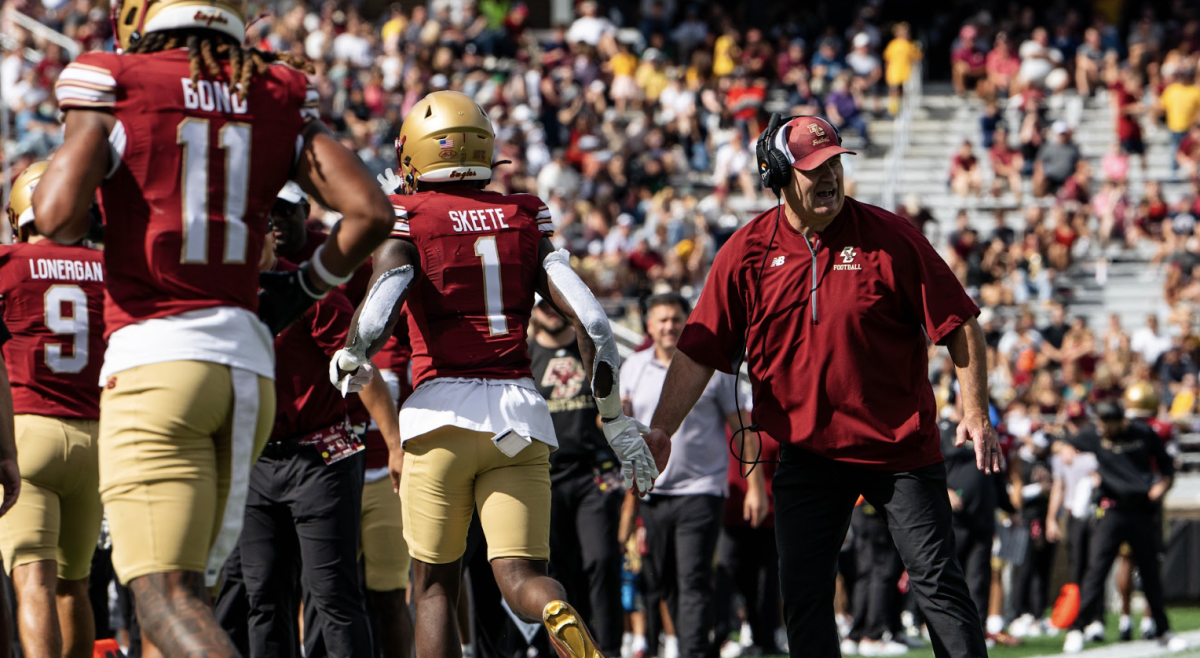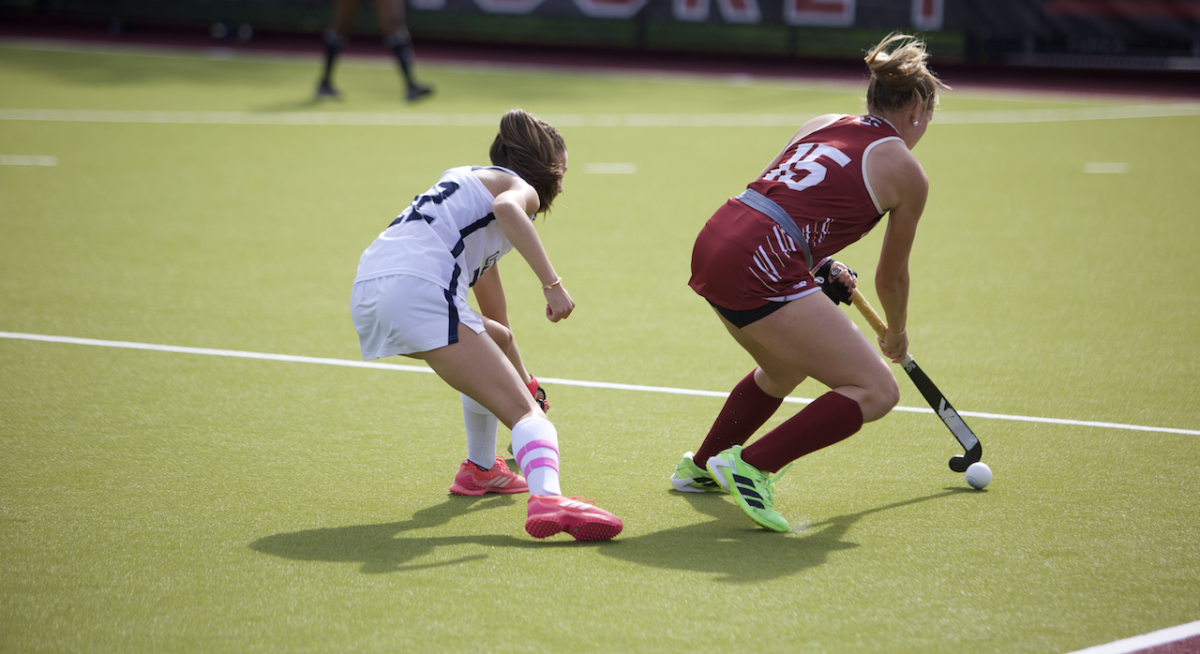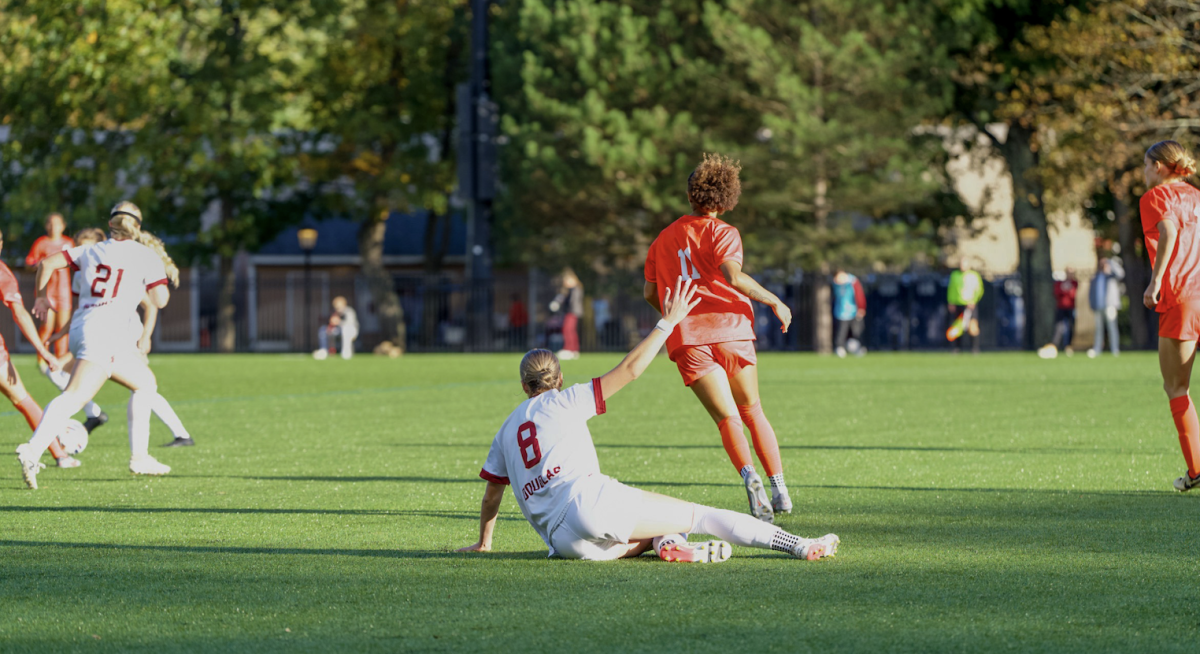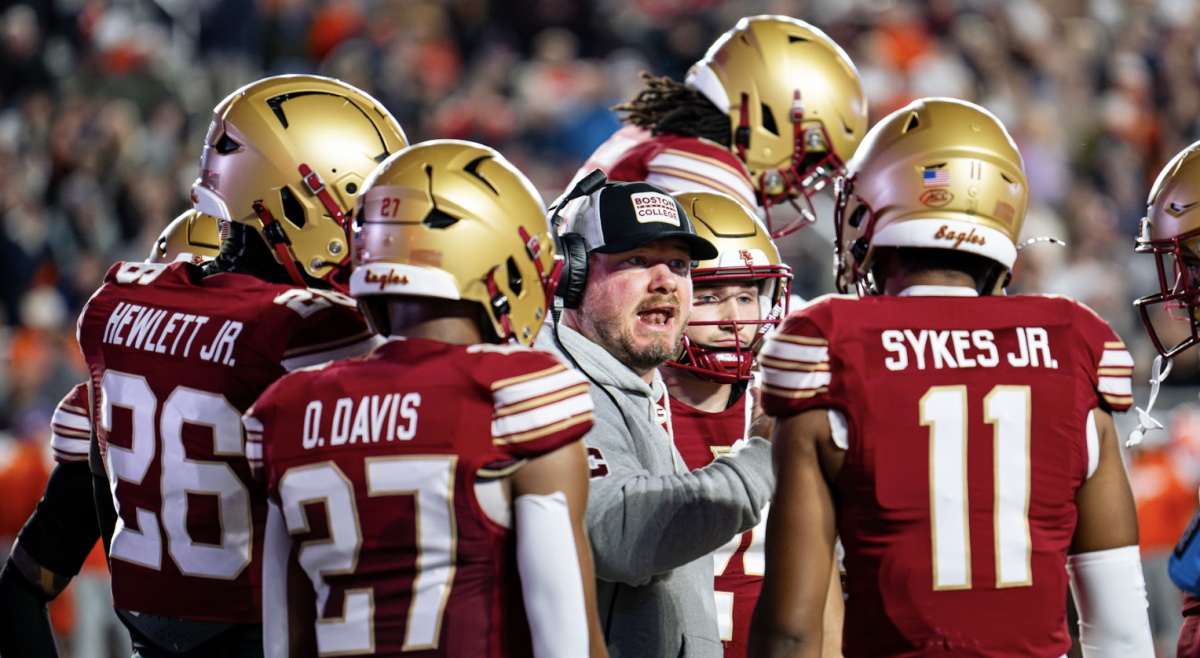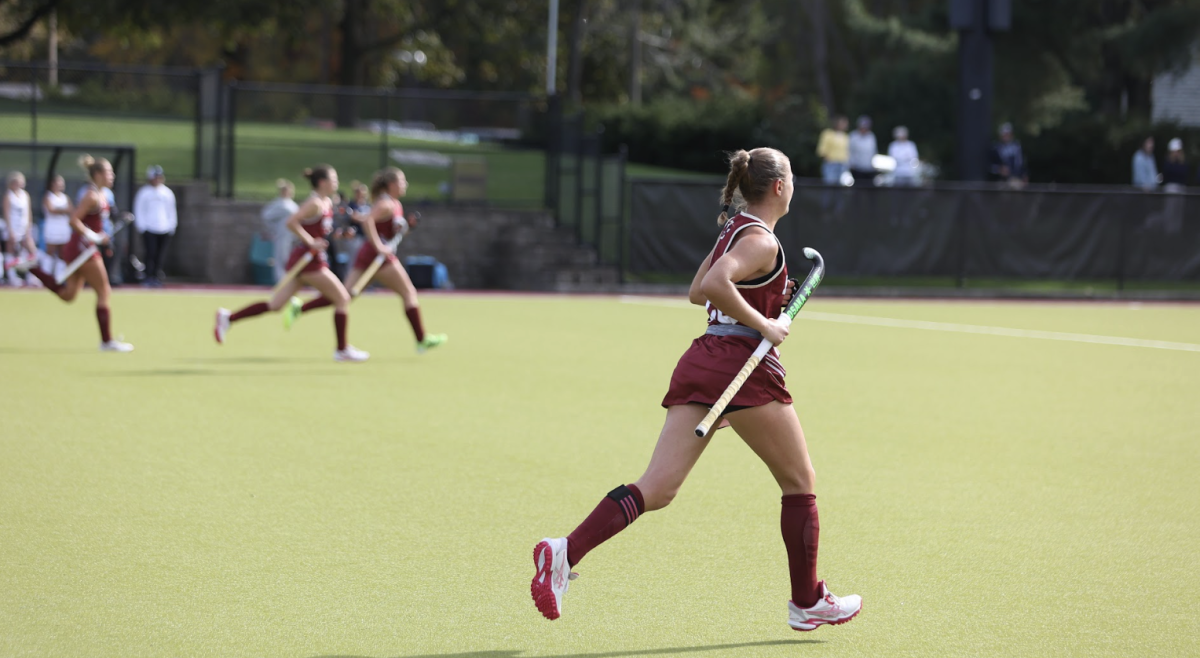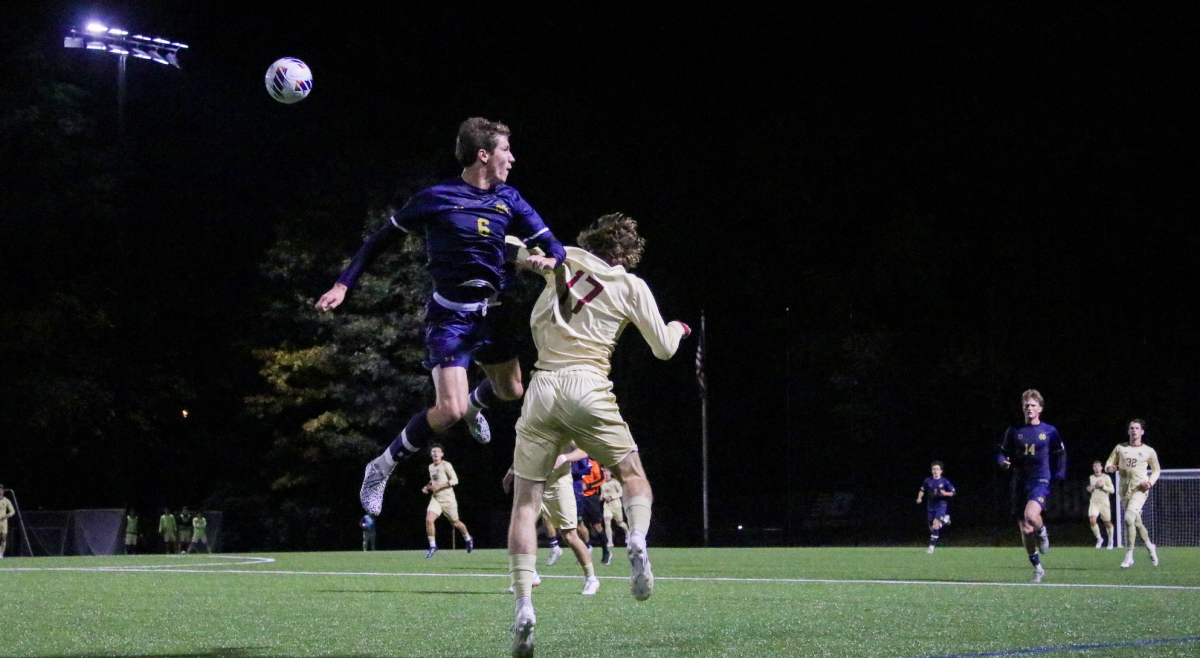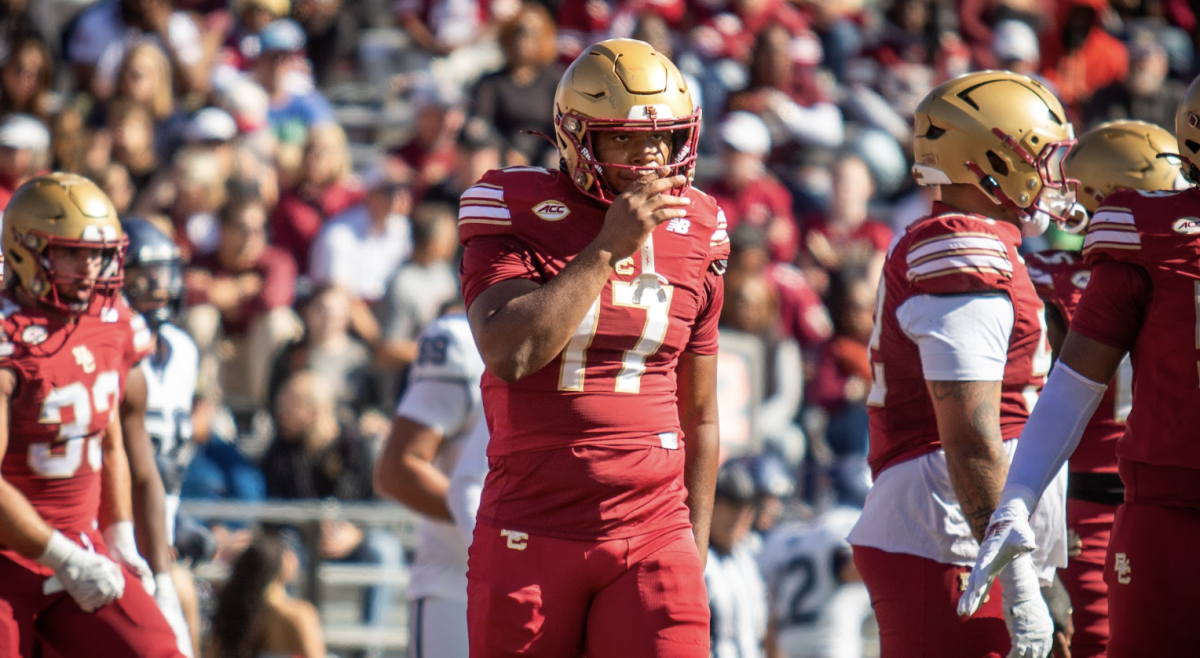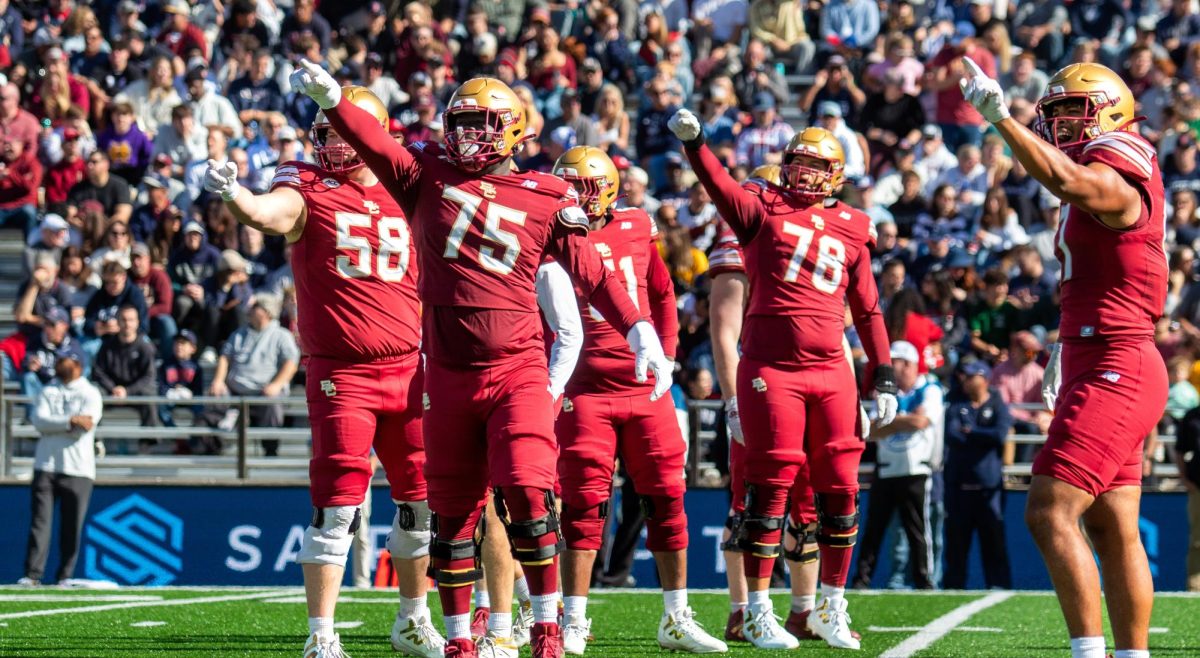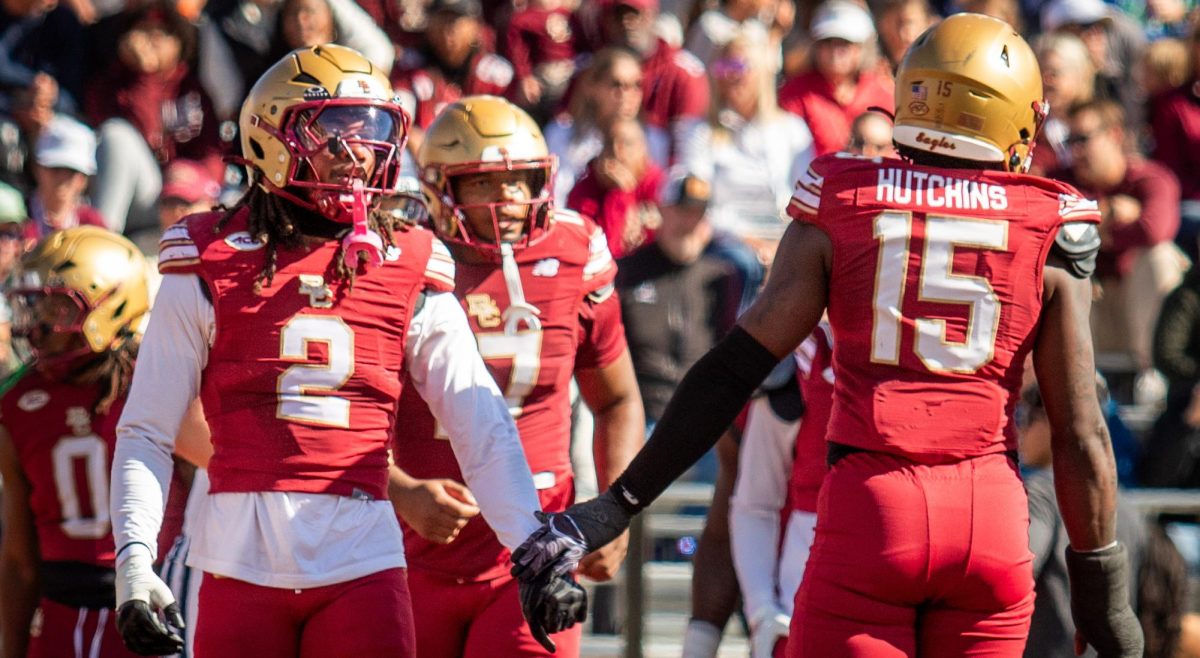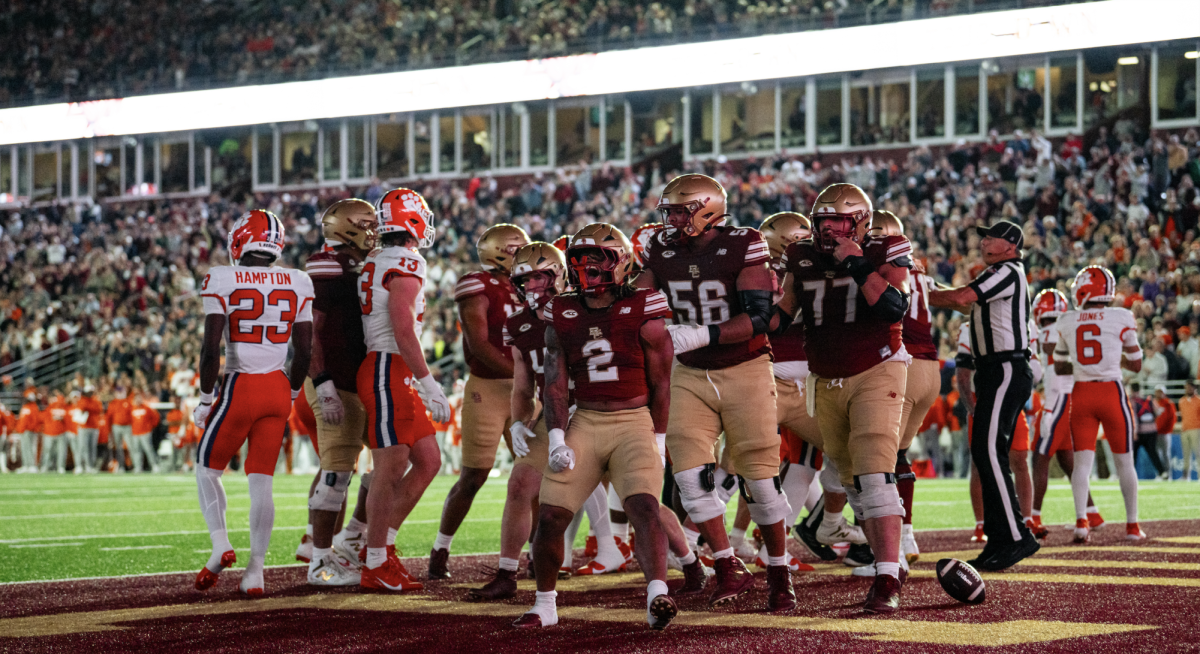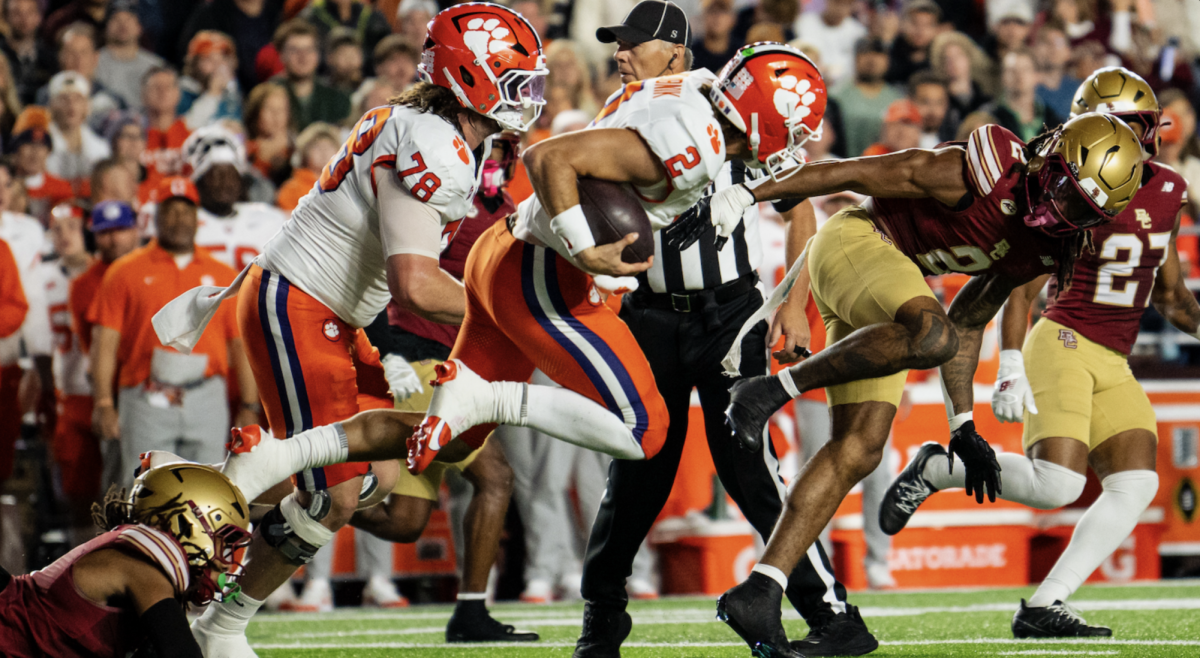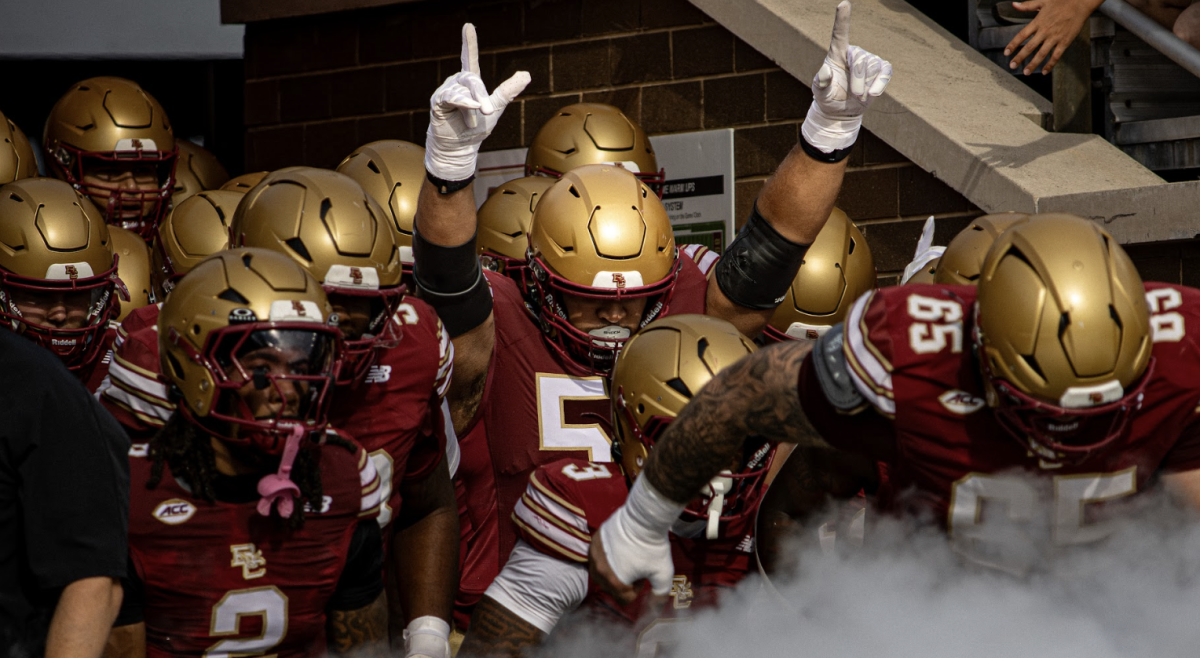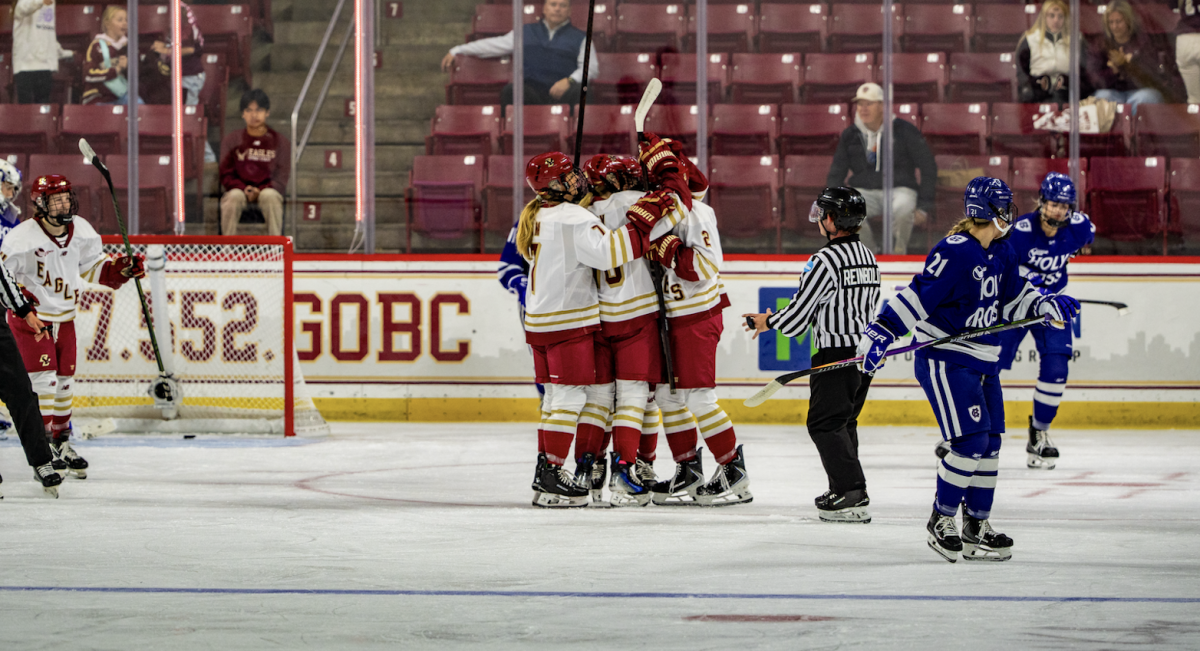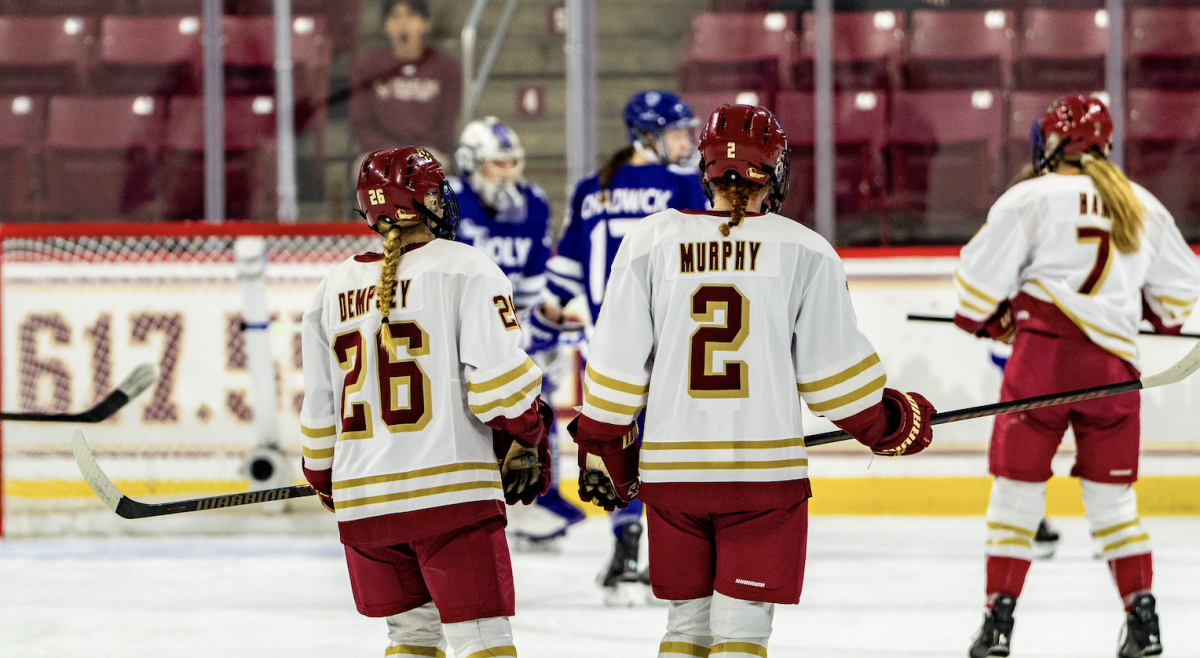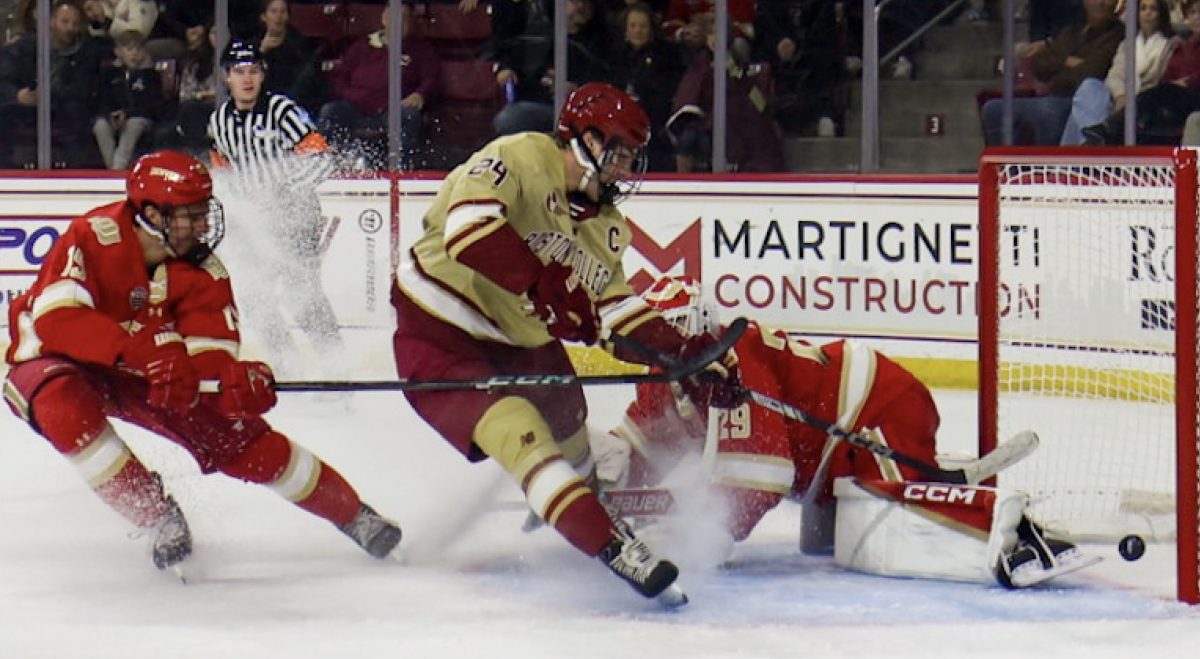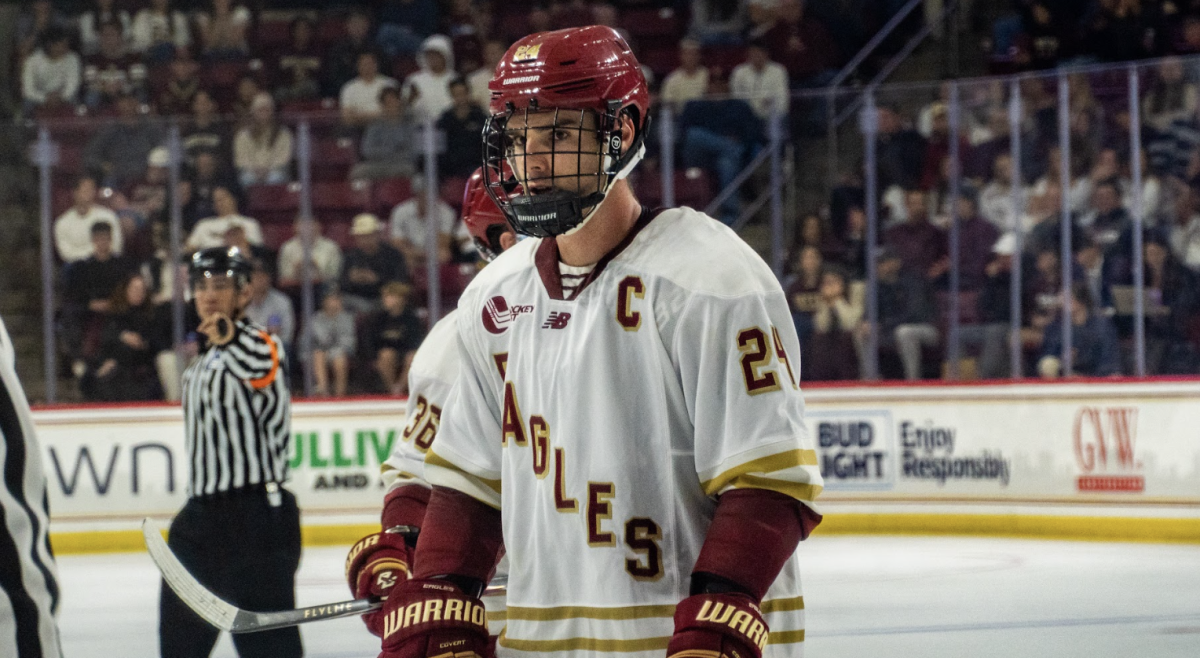Florida State, the No. 3 team in the country heading into Saturday’s matchup in Chestnut Hill, Mass. and 24.5-point favorites, is no stranger to running away with games in the second half. Boston College football head coach Jeff Hafley was well aware of that fact before the game even started, and it all came down to time of possession (TOP), he said.
“I believe it was, if you had the ball for like 34 minutes, they were like 3–10,” Hafley said in his post-game press conference. “If you don’t, they haven’t lost.”
In Week One, the Seminoles controlled the football for 35:23, pulling away in the final two quarters to topple then-No. 5 Louisiana State 45–24. In the second half, FSU dominated with 31 points. Week Two fared slightly better for the Seminoles’ opponent in terms of TOP, but FSU still managed to thrash Southern Missouri 66–13 with 32:33 minutes of time with the football.
On Saturday, the Eagles reversed that spell—which Hafley said was the plan all along.
“So we had 33 minutes and 50 seconds,” Hafley said. “I wanted to take as much clock as we could to hold them off the field. In a variety of ways, we did it.”
This underlooked, yet pivotal, component of the game played to BC’s advantage by all measures. It sparked life into a squad that had almost been defeated by an FCS opponent a week prior. But “self-inflicted wounds,” according to quarterback Thomas Castellanos, put the nail in BC’s coffin. The Eagles accumulated a whopping 18 penalties in the 31–29 loss, which some might consider to be the best loss in program history by the numbers.
Here are three observations from the loss.
Cementing Castellanos
He said it himself. With every game Castellanos starts, he’s going to learn more about his competitiveness, more about calculating the defense, more about spotting his reads, and more about knowing how to execute.
“This is like my second start since high school,” Castellanos said after the game. “Every game and every play, I’m just getting more comfortable. It’s just starting to flow, starting to click.”
Flow it did. BC’s sophomore signal caller, who transferred to the Heights from University of Central Florida, accounted for 400 yards of total offense on Saturday, including one passing touchdown and one rushing touchdown.
If it weren’t for his mobility and awareness to be able to escape the pocket, BC’s pass catchers would likely not be able to carry the offensive workload. After losing Zay Flowers to the NFL in the offseason, there is still not one identifiable source of pure receiving dominance on the Eagles’ roster. BC has to be a ground-dominant offense with a playmaker under center—which could not have occurred with an O-line that rotated its combination eight times in 2022—and Castellanos is just that.
Castellanos picked up 95 rushing yards on 16 carries against an FSU defense that features a highly developed front, one that Hafley mentioned possesses multiple NFL defensemen lineman in the making. Castellanos’ stability when the pocket collapses is just something you cannot teach. On multiple long third downs throughout the contest, Castellanos steadied himself and pushed right up the center of the field, gaining 10-plus yards to keep BC alive on several drives.
With 2:07 remaining in the first quarter, Castellanos faced 3rd-and-8 and sprinted up the field amid folding protection, garnering 29 yards. Another 14-yard run on 3rd-and-15 during the same drive paved the way to a BC field goal. And with 5:19 left in the final quarter, Castellanos used his legs to grab a rushing touchdown and cut the Seminoles’ lead to 31–29. On the play, Castellanos jabbed into the line of scrimmage and scurried outside fast enough to evade FSU’s defenders.
Castellanos’s style and demeanor provide a confidence in the quarterback ring that has not been seen since the early Phil Jurkovec days.
Third- and Fourth-Down Efficiency
Converting four of five total fourth downs and eight of 19 third downs while holding the No. 3 team in the nation to an 11.1 percent conversion rate on third down is no small feat. Any attendee of the game could tell that this improbable efficiency against such a stacked roster—which includes Heisman candidate Jordan Travis, projected first-round wide receivers Keon Coleman and Johnny Wilson, and future likely defensive draft picks Jared Verse and Patrick Payton—is what kept BC within fighting distance.
Going back to every single one of the Eagles’ scoring drives, except the fumble recovery, BC had to convert at least one third or fourth down, most being from five or more yards out. On short fourth downs, the shotgun formation along with Kye Robichaux to Castellanos’ side proved to be a stealthy option that worked effectively. Robichaux recorded 64 rushing yards on 21 carries and converted seven third or fourth downs on his own.
Going back through the tape and play-by-play, there are other moments of glory—largely Castellanos-driven—that pop up through the numbers game which highlighted BC’s ridiculous conversion percentage. On 3rd-and-14 with 7:41 left in the second quarter, Castellanos notched a 45-yard rush. On 3rd-and-17 with 3:26 to go in the third quarter, Castellanos found Dino Tomlin for 52 yards through the air. On 3rd-and-10 with 7:09 left to play in regulation, Castellanos added another 13-yarder on the ground.
This sort of efficiency is a testament to BC’s quarterback and running back athleticism, including the revamped offensive line which has been durable across all three games.
Losing the Mind Games
The Eagles tied Florida State in total first downs with 20, led in third- and fourth-down efficiency, led in total yards with 457 to FSU’s 340, led in total passing yards with 305 to FSU’s 212, led in total rushing yards with 152 to FSU’s 128, and led in yards per passing attempt. What else did it lead in? Penalties—more penalties than BC had accumulated in any single game in program history.
False starts, ineligible receivers downfield, holding, and a final facemask penalty essentially handed BC its loss on Saturday. In total, the Eagles registered 18 penalties for 131 yards. In its first three games combined, BC has lost 333 yards due to penalties.
In addition, the special teams department was nothing short of horrendous when it mattered most. A shanked Liam Connor extra point forced Hafley to attempt a two-point conversion on the next touchdown the Eagles scored, which they did not convert. If BC had made those two extra points, it would have tied Florida State 31–31. Hafley knows that his players are killing themselves from within—it’s not an opponent problem.
“Today was a little different in that it wasn’t post-snap personal fouls that got me really hot,” Hafley said. “We didn’t have the dumb fouls … but it’s too many.”


